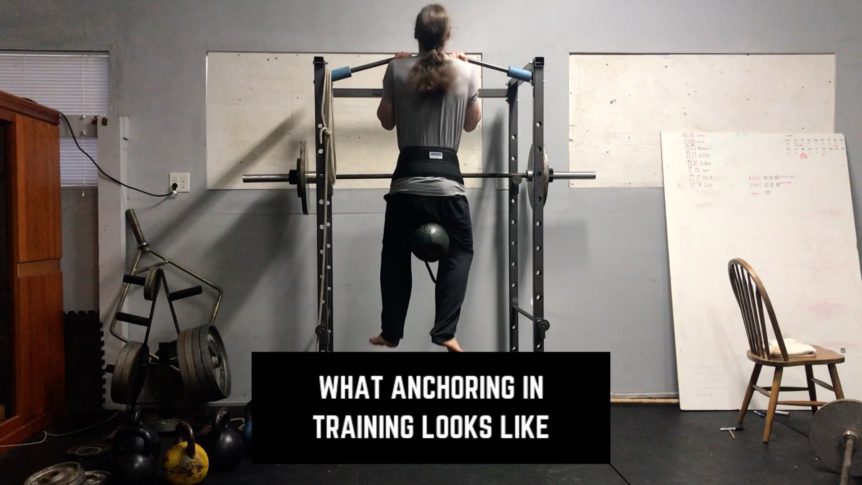This is what anchoring in training looks like from the outside. Of course, the most important part of using an anchor is what it feels like inside the body, but that I can’t “show” you.
Lately, I’ve been thinking about how I learn best by doing. Short of that, seeing someone else actually doing sets that in motion (and likely triggers mirror neurons according to neuroscience).
Mental training is a tough topic in that in doing it you have to bring awareness to things in your mind that you tend not to be aware of.
Last week I showed that with visualization which you can find here.
This week we turn to another of the mental technologies, anchoring.
In this video, I set a set PR for the weighted chin-up. My previous best was six reps with 24 kg or 53 lbs. Here I managed eight reps and could have gotten a ninth if I wanted to really work for it. The anchor helped!
Although anchoring can be done with an internal visualization or phrase you say to yourself, I like to use kinesthetic anchors. That’s because I am wired kinesthetically.
In this case, the anchor is to cross my arms above my head and bump the wrists together twice. This elicits a certain state that is appropriate for doing pull-ups and chin-ups specifically, as that is how I’ve set it up.
Looks weird, I know, but I don’t care. I’ll do far weirder stuff if it gets me results!
Deeper dives on setting and using anchors can be found in Mental Muscle.
And you can see this process in action inside the Mental Muscle Training Intensive.

